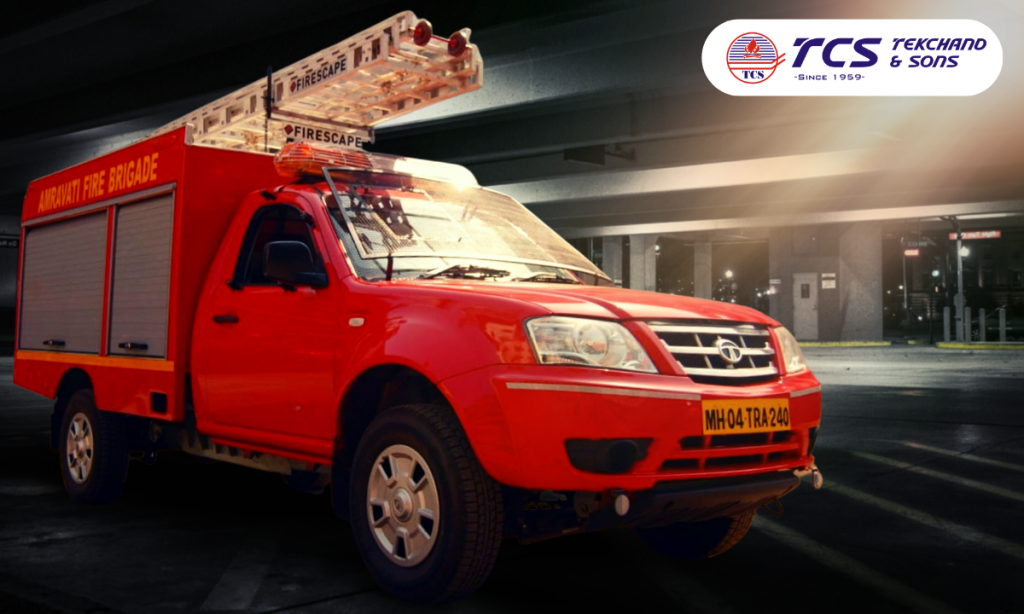Fire fighting vehicles have come a long way since the early days of horse-drawn fire wagons. Today’s fire fighting vehicles are highly advanced, sophisticated machines that are designed to meet the unique challenges and demands of different environments. In this blog post, we will take a look at the evolution of fire fighting vehicles, from their humble beginnings to the highly advanced vehicles of today, and explore what the future may hold for fire fighting technology.
The earliest fire fighting vehicles were horse-drawn wagons that were used to transport firefighters and their equipment to the scene of a fire. These wagons were often simple, open-bed vehicles that were equipped with basic tools such as ladders, axes, and hoses. They were also equipped with bells and other noise makers that were used to alert the public to the presence of a fire and to signal the arrival of the fire department.
As the industrial revolution took hold, fire fighting vehicles began to evolve and become more sophisticated. Steam-powered fire engines were developed, which allowed firefighters to pump large volumes of water onto a fire. These engines were also equipped with more advanced tools and equipment, such as fire hoses, nozzles, and pumps.
In the early 20th century, petrol and diesel engines began to be used to power fire fighting vehicles. These engines were more reliable and efficient than steam engines, and they allowed fire fighting vehicles to travel faster and further. Additionally, fire fighting vehicles began to be equipped with more advanced tools and equipment, such as aerial ladders, which allowed firefighters to reach upper floors of buildings, and specialized fire suppression systems, which made it easier to extinguish fires.
As technology continued to advance, fire fighting vehicles became even more sophisticated. Today’s fire fighting vehicles are equipped with a wide range of advanced technologies, such as GPS, mapping software, and real-time weather information, which help them to navigate through difficult terrain and reach remote locations quickly and safely. They also use advanced communication systems that allow them to coordinate with other emergency response teams and stay in contact with command centres.
Looking to the future, fire fighting vehicles are likely to become even more advanced and sophisticated. One area of focus is the use of drones and other unmanned aerial vehicles (UAVs) to support fire fighting efforts. Drones can be used to conduct aerial reconnaissance, identify hotspots and assess the spread of fires, and to drop fire retardant or water onto fires.
Another area of focus is the use of electric or hybrid powertrains to power fire fighting vehicles. Electric and hybrid powertrains are more energy-efficient than traditional petrol or diesel engines, and they produce zero emissions, which can help to reduce the impact of fire fighting vehicles on the environment.
Another area of focus is the use of virtual and augmented reality (VR and AR) technology to train and prepare firefighters for different scenarios. Firefighters can be trained in virtual environments that simulate different types of fires, building layouts, and other hazards, allowing them to better prepare for real-world incidents.
In addition, the use of artificial intelligence and machine learning technology is also likely to play a bigger role in the future of fire fighting. AI can be used to predict the spread of fires, identify hotspots, and to optimize the deployment of fire fighting resources.
In conclusion, fire fighting vehicles have come a long way since their humble beginnings as horse-drawn wagons. Today’s fire fighting vehicles are highly advanced and sophisticated machines that are designed to meet the unique challenges and demands of different environments. And with the use of new technology like drones, electric powertrains, virtual and augmented reality, artificial intelligence, fire fighting vehicles will continue to evolve and become even more efficient and effective in the future.

